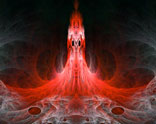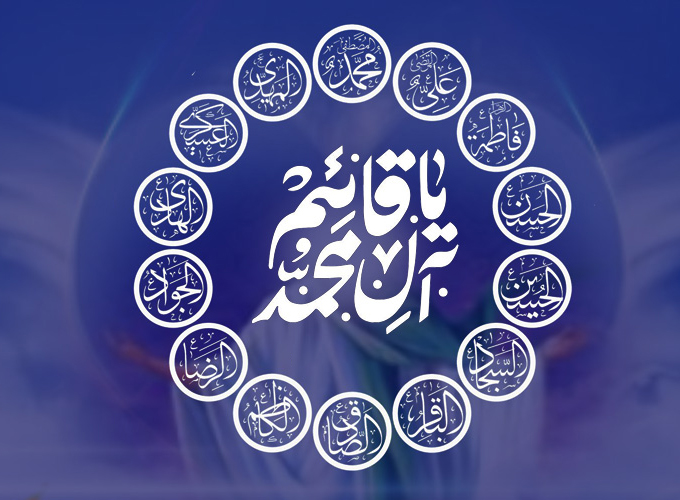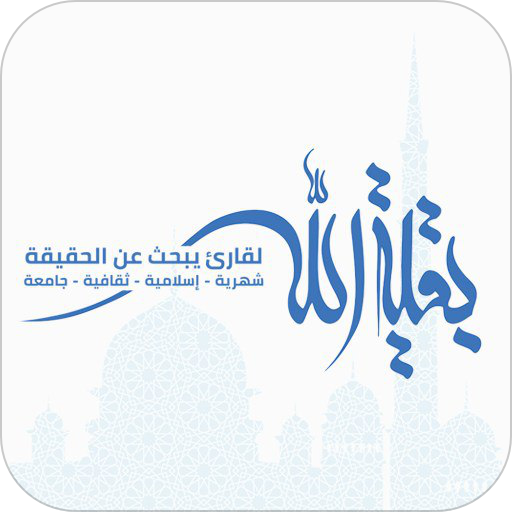The Holy Prophet Muhammad (peace be upon him and his household) has prophesied about several events that will occur just before the advent of the day of judgment. Among these, He has foretold the advent of one of his descendants, Mahdi (the guided one), which will materialize when the believers are severely oppressed in every corner of the world. He will fight the oppressors, unite the Muslims, bring peace and justice to the world, rule over the Arabs, and lead a prayer in Mecca at which Jesus will be present.
Shi'a believe that he was born to a Byzantine slave named Narjis Khatoun, and that his birth was kept quiet by his father, the Eleventh Imam, Hasan Askari, because of the intense persecution of the Shi'a at that time.
He was born on the 15th Sha’ban 255 A.H. in the city of Samara. The momentum us and singular aspects of his birth greatly resembled those under which the Prophet Moses was born. The birth of Prophet Moses had signaled the downfall and extinction of the empire of Pharoah, who had ordered the slaying of all the newly born children of Bani-Israel. The Abbasid kings were similarly apprehensive of the continuous traditions of the Holy Prophet about the birth of Imam Mahdi, who was to bring about a curse to their (Abbasid) very empire. They were, therefore, laying in ambush to discover the birth of the Imam and to put an end to his life. But the event of the Imam's birth was enveloped and shielded by the same Divine protection and miraculous phenomena which had marked the historical birth of Prophet Moses. His birth remained strictly confidential and his nursery shrouded in secrecy except to a few devotees.
The Imam's birth had coincided with the reign of Mu’tamad, the well-known Abbasid king. He, being aware of the prophecy of the twelfth Imam's birth occurring in his reign, was extremely worried and anxious to trace him out.
But on the martyrdom of Imam Hasan Askari, when he was informed about the Imam's funeral prayer having been conducted by his four year old son, his perplexity knew no bounds.
It struck his mind that this very boy must be the Imam, but he managed to hide his inner concern at the news of the existence of the young Imam. In order to get confirmation that the young Imam did in fact exist, he ordered the arrest of the Imam's mother, Narjis Khatoun.
When Narjis was brought before Mu’tamad and inquiries made about the birth of the twelfth Holy Imam, she, in order to safeguard her own life as well as to protect her son, replied that she had never the symptoms of maternity and labor pain; so, for the moment, he did not harass her, but did put her under the most strict surveillance ofQazi Abu Sorab, entrusting him with the task of killing any child born to her.
Soon after this incident, the Abbasid kingdom passed through a revolutionary phase which greatly bewildered Mu’tamad. He was forced to face the invasion of Sahib-al-Zanj, who raided Hejaz and Yemen and let loose the hounds of loot and arson throughout the Abbasid kingdom, subjecting the administration of Baghdad, the capitol, to utter chaos. Mu’tamad was, therefore, naturally too occupied by warfare to pay any attention towards
Narjis, who was consequently released after six months and questioned no further about the birth of the twelfth Holy Imam.
Hidden since birth, he reappeared at age of 6 to assert his claim to the Imamate, only to then disappear down a well to avoid the sad fate of his father and grandfather.For the next seventy years he maintained contact with his followers through a succession of four assistants, each known asBab (Gate), Uthman Amir; his son Abu Ja’far Muhammad bin Uthman; Abu'l Qasim Hosein bin Ruh Nawbakhti; and Abu'l Hosein Ali bin Muhammad Samarri. The period when he used the 4 Babs as his form of contacting the Shi'a is known as the minor occultation.
On his deathbed in 941 CE, the fourth Bab, Samarri produced a letter from the Imam stating that there should beno successor to Samarri and that from that time forward the Mahdi would not be seen until he reappeared as champion of the faithful in the events leading to the Judgement Day. Therefore, after 941 CE there has been no earthly expression of the Imamate. This period is known asthe Major Occultation. However, it is still possible to seek the Twelfth Imam's advice or intercession by writing him a letter and leaving it at one of the Shi’a shrines. To explain the doctrine of the Occultation, Shi’a theologians draw an analogy to the idea of the sun being occulted by clouds. While the sun is out of sight, it still exists and warms the earth.
There is much that is miraculous associated with Mahdi. The various traditions are rich in stories and are often contradictory. Tales range from speaking from the womb, growing at so astonishing rate that he was full grown by age 6, being raised by birds and with the ability to appear and disappear at will.
While there was much controversy over the succession of the 12th Imam, as the Lesser Occultation proceeded, dissent gradually diminished. This can be attributed in part to the active support of the Caliphate for the institution of the Bab. Several opponents of the doctrine of the Occultation were executed and others were persecuted in various ways. Another factor explaining the acceptance of the Lesser Occultation, and by extension the Greater Occultation, was that due to the house arrest of the 10th and 11th Imams. Hence, most Shi’as were already accustomed to the idea of their Imam being hidden from their view.
In the time of the 10th and 11th Imams a network ofwikala(agents) had developed to act as intermediaries between the Imam and his followers, handling money and carrying messages back and forth. In fact, Uthman Amri, the first Bab of the 12th Imam had held the same position as head of the wikala under the 11th Imam. Therefore, for most Shi’as, there was not a significant change in their relation to their Imam after the death of the Eleventh Imam.

















